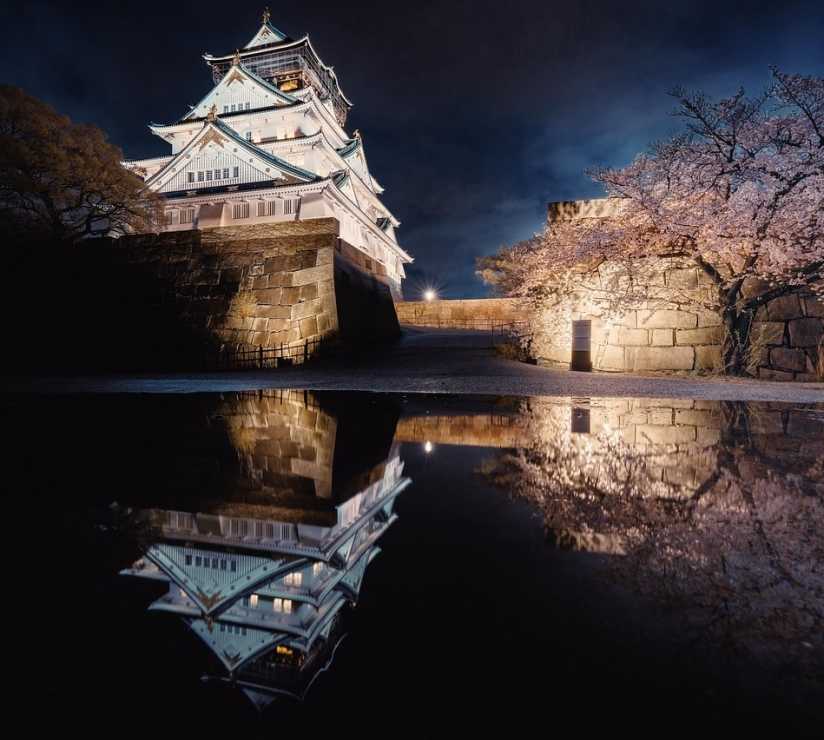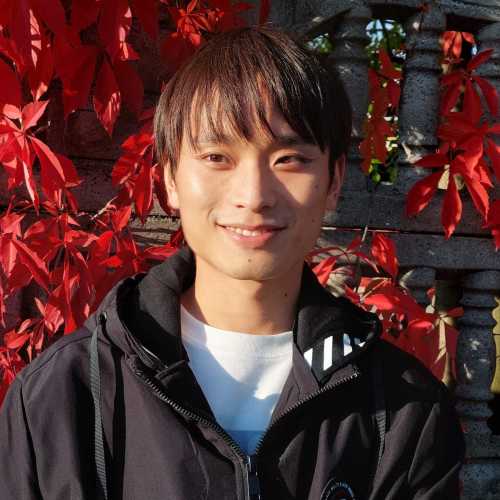Table Of Contents
- Seeing Osaka Without the Filter
- Osaka Castle, Still Worth It?
- Why the Umeda Sky Building Surprised Me
- My Go-To Day Trips (That Aren't Kyoto)
- Hidden Gems I'd Take a Friend To
- Osaka Aquarium, Believe the Hype?
- Universal Studios Japan — For More Than Harry Potter
- Where to Eat Without Regret (or Lines)
- Shopping Streets vs Shopping Arcades — What's the Vibe?
- Cultural Sites and Ancient Temples
- Other Attractions Worth Considering
- Getting Around Like a Local
- Seasonal Considerations and Timing
- Where to Stay for Easy Access
- Food Tour Alternatives to Organized Groups
- Understanding Osaka's Special Atmosphere
- Planning Your Osaka Trip
- Final Thoughts: Osaka, Your Way
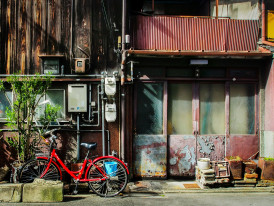
Rei's bicycle leaned on an alley wall in Nakazakicho Photo by Galih Setyo Putro on Unsplash
Seeing Osaka Without the Filter
Look, I've lived in this bustling city my entire life, and I'm tired of seeing the same recycled lists of places to visit in Osaka that treat every attraction like it's life-changing. Half the recommendations are tourist traps, and the other half miss the point entirely. So here's what I'd actually tell a friend coming to visit, a mix of the genuinely worthwhile icons and the low-key spots that make Osaka worth exploring.
I'm not going to pretend Osaka Castle isn't worth seeing just because it's popular, but I'm also not going to oversell you on places that'll leave you wondering why you waited in line for two hours. This is about seeing Osaka through local eyes, not through a guidebook that was probably written by someone who spent three days here.
What This Guide Actually Covers
This isn't your typical exhaustive list that'll have you running around like a headless chicken. Instead, I'm giving you the real story on Osaka's mix of iconic landmarks and hidden gems — the places that actually deliver, the ones that don't, and the alternatives that might surprise you.
Getting Your Bearings in Central Osaka
Before we dive in, let's talk geography. Most of what you'll want to see clusters around a few key areas. Osaka Station and the Umeda district in the north, Namba and Dotonbori in the south, and the castle area in between. The train network here is extensive — you've got multiple train stations connecting everything, and if you're flying in through Kansai International Airport, you'll likely pass through Shin Osaka Station depending on your route into the city.
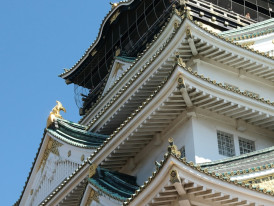
View from the top floor of the main keep Photo by Jazmin Wong on Unsplash
Osaka Castle, Still Worth It?
Let me be upfront: Osaka Castle is a reconstruction, not the original. But before you roll your eyes and skip it entirely, hear me out.
The Real Story and What Makes It Worth Your Time
Yes, the current castle was rebuilt in concrete in 1931, then renovated again in the 1990s. It's not ancient Japanese history in timber and stone. But here's the thing — the site itself is historically significant, and the reconstructed castle does capture something of what made this place important for centuries. The castle originally played a crucial role in unifying Japan under Toyotomi Hideyoshi in the late 16th century. While the building you see today isn't authentic, the strategic importance of this location — and the stories that unfolded here — are real.
Osaka Castle Park is genuinely pleasant, especially if you time it right. Early morning visits are magic — you'll have the grounds largely to yourself, and the moat reflects the castle beautifully in still water. During cherry blossom season, it's spectacular, though prepare for crowds.
The observation deck at the top offers solid views over the city, and the museum inside covers the castle's role in Japanese history more thoroughly than most tourist sites bother with. The entrance fee is reasonable, and you can easily combine it with a walk through the surrounding park.
When to Skip It and How to Get There
If you're only in Osaka for a day and you've seen other castles in Japan, you can probably skip this one. The interior is essentially a modern museum, and if you're not interested in the historical context, the experience won't justify the time. From Osaka Station, it's about 15 minutes by train. From Namba Station, similar timing but you'll transfer once. The closest station is Osakajokoen, which is a short walk from the castle grounds.
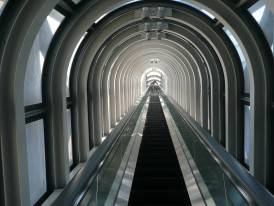
Escalators inside the floating garden photo by Pixabay
Why the Umeda Sky Building Surprised Me
I'll admit it — I avoided the Umeda Sky Building for years, assuming it was just another tourist trap with overpriced observation decks. I was wrong.
The Architecture and Observatory Experience
This isn't just another tall building with a view. The design — two towers connected by a "floating garden" observatory — is genuinely striking. When it was completed in 1993, it was architecturally adventurous, and it's aged well.
The outdoor observation deck is the real draw here. Unlike many observation decks that keep you behind glass, this one lets you feel the wind and actually experience being 170 meters above the city. The 360-degree views take in everything from Osaka Bay to the mountains beyond the Osaka Prefecture.
Best Times to Visit and Food Options
Late afternoon works well — you can catch the transition from daylight to neon lights as the city comes alive below. The building is less crowded on weekdays, and the lighting at dusk gives you that quintessential urban Japan experience without feeling completely touristy. The basement houses a recreation of early 20th-century Osaka streets, complete with restaurants serving traditional Japanese cuisine. It's kitschy, but the food is actually solid, and it's a convenient way to grab a meal without leaving the building.
Looking for a private city experience in Osaka?
Explore the city with a local who plans a private day just for you; no groups, no scripts.
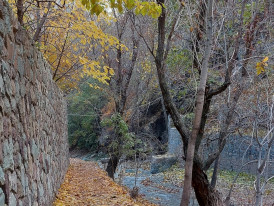
Riverside path in Minoh during fall. Photo by Anahita Honarasa on Unsplash
My Go-To Day Trips (That Aren't Kyoto)
Everyone tells you to do a day trip to Kyoto, and sure, it's an easy one hour train ride. But if you want something different, here are the trips I actually recommend to friends.
Minoo Park — Nature Without the Tour Bus
Thirty minutes north of central Osaka, Minoo (or Minoh) offers hiking trails, a waterfall, and fall foliage that rivals anywhere in Japan. It's popular with locals but largely ignored by international visitors.
The main trail follows a river up to Minoo Falls — not spectacular by international standards, but pleasant, and the path is lined with maple trees that explode in color during autumn. The park also has wild monkeys, though they're used to people and generally mind their own business. This is where Osaka residents go to decompress. No entrance fee, no crowds, just a pleasant walk through nature that feels completely removed from the urban intensity below. The local specialty is maple leaf tempura — yes, actual fried maple leaves — which sounds gimmicky but is surprisingly good.
Mount Koya — If You Want Something More Ambitious
If you're willing to commit to a longer day trip, Mount Koya offers one of Japan's most important Buddhist sites. It's a two-hour journey involving both trains and a cable car, but you'll find over 100 temples, ancient cemeteries, and a completely different atmosphere from anywhere else in the region. The highlight is Okunoin Cemetery, where over 200,000 graves and monuments line a path through towering cedar trees. It's mystical in a way that few places in modern Japan manage to be.
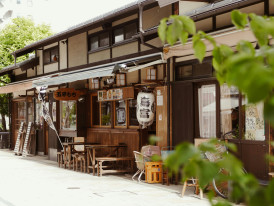
Traditional wooden building converted into a modern cafe in Nakazakicho. Photo by Joris Beugels on Unsplash
Hidden Gems I'd Take a Friend To
This is where things get interesting. These are the places that don't make it onto most tourist lists but capture something essential about what makes Osaka distinct.
Namba Yasaka Shrine, Instagram Without the Crowds
Namba Yasaka Shrine features a massive lion head stage that's become popular on social media, but most people snap their photos and leave. Stay longer and you'll discover it's actually a functioning neighborhood shrine with a surprisingly peaceful atmosphere despite being surrounded by urban chaos.
The lion head structure houses a stage used for traditional performances. It's not ancient — it was built in the 1970s — but it connects to older traditions of lion dances meant to ward off evil spirits. The contrast between the dramatic architecture and the quiet residential streets around it perfectly captures Osaka's mix of theatrical and everyday.
Orange Street, Vintage Shopping Done Right
Orange Street runs through the Nippombashi and Namba areas, lined with vintage shops, independent cafes, and boutiques that actually cater to locals rather than tourists. It's not off the beaten path exactly, but it's not on most people's radar either.
Old school record shops, vintage clothing from the 1960s through 1990s, and cafes that take their coffee seriously. It's a great place to spend a couple of hours browsing, and you'll get a sense of Osaka's creative subcultures that tourist areas don't reveal.
Nakazakicho, Osaka's Creative Quarter
A few blocks north of Osaka Station, Nakazakicho is a small district of narrow alleys lined with independent shops, galleries, and cafes housed in renovated traditional buildings. It's become popular with younger locals over the past decade, but it maintains a village-like atmosphere despite being in the heart of the city.
The area was largely ignored during Japan's economic boom years, which meant the old buildings survived rather than being torn down for modern developments. Now those same buildings house creative businesses that give the area character you won't find in newer districts. Don't just hit the main shops; wander the residential side streets and you'll find tiny shrines tucked between houses, traditional architecture mixed with contemporary additions, and glimpses of how local life actually functions away from the tourist circuits.

Children watching whale sharks Image by StockSnap from Pixabay
Osaka Aquarium, Believe the Hype?
The Osaka Aquarium consistently ranks among the world's best, and in this case, the reputation is mostly deserved. But there are smart ways to visit and less smart ways.
What Makes It Special and Timing Your Visit
The centerpiece is a massive central tank housing whale sharks — genuinely impressive creatures that few aquariums can accommodate. The tank is designed so you spiral down around it, seeing the same ecosystem from different depths and perspectives. Each regional exhibit recreates specific marine environments rather than just displaying fish in generic tanks. The jellyfish section is particularly well done — meditative and otherworldly in the way that good aquarium design can be.
Weekday mornings are significantly less crowded. School groups tend to arrive around 10 AM, and weekend afternoons are chaos. If you can visit on a Tuesday or Wednesday morning, you'll have a much more peaceful experience.
Is the Entrance Fee Worth It?
At around 2,400 yen for adults, it's not cheap, but it's comparable to major aquariums internationally, and the quality justifies the cost if you're genuinely interested in marine life. If you're lukewarm about aquariums, skip it — there's no point forcing yourself through something you won't enjoy. The Tempozan Ferris Wheel beside the aquarium offers views over Osaka Bay, but it's skippable unless you're particularly fond of ferris wheels. The bay views are pleasant but not spectacular, and you'll get better city views from other observation deck locations.
What if your day in Osaka was planned by someone who knows it — and you?
City Unscripted matches you with a local host who creates a private experience based on your interests, not a set route.
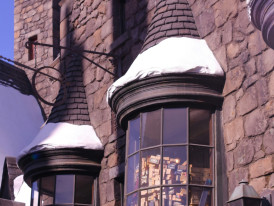
Detailed facade of Hogwarts castle with few visitors Photo by Zhang Meng on Unsplash
Universal Studios Japan — For More Than Harry Potter
Universal Studios Japan dominates many Osaka travel conversations, but the reality is more complicated than the hype suggests.
The Wizarding World Reality Check and Beyond
Yes, the Harry Potter area is impressively detailed. The Hogwarts castle recreation is genuinely impressive, and they've nailed the atmosphere. But be prepared for crowds that can make the experience feel more like waiting in line than exploring a magical world.
The Jurassic Park area offers solid thrills, and the Nintendo World (if you can get in — it requires timed entry tickets) captures the video game aesthetic remarkably well. The park's strength is in the attention to detail in themed areas rather than in groundbreaking rides.
Crowd Management and Value Assessment
If you're going, buy Express Passes for the major attractions — the regular lines can easily eat your entire day. Alternatively, visit during the week in off-season months when crowds are more manageable. That depends entirely on your interest in theme parks and your tolerance for crowds. If you love immersive themed experiences and don't mind paying premium prices, it delivers. If you're ambivalent about theme parks, your time is probably better spent elsewhere in Osaka.
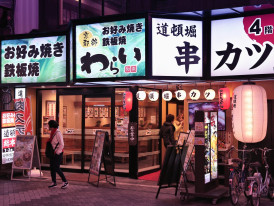
Small neighborhood izakaya with locals dining at the counter.
Where to Eat Without Regret (or Lines)
Osaka's reputation as a food city is well-deserved, but navigating the dining scene requires some local knowledge to avoid tourist traps and endless queues.
Street Food That Actually Delivers
Kuromon Ichiba Market appears on every food list, and while it's become touristy, the quality remains solid if you know where to look. The fresh seafood vendors in the middle sections serve excellent sashimi and grilled fish, while the vendors near the entrances tend to cater more to tourists with Instagram-friendly but mediocre offerings.
The Takoyaki and Okonomiyaki Reality
Takoyaki (octopus balls) are Osaka's signature street food, but most tourist-area stands serve mediocre versions. For the real thing, look for places where locals are eating — usually small stands with minimal English signage and lines of office workers during lunch hours.
Okonomiyaki is Osaka's other signature dish — savory pancakes layered with cabbage, meat or seafood, and topped with a variety of sauces. Tourist areas serve acceptable versions, but the best okonomiyaki comes from neighborhood spots that have been perfecting their recipes for decades.
Finding Authentic Local Spots and Food Culture
Look for places where you cook your own okonomiyaki at table grills — it's part of the experience, and these places tend to be more authentic than the ones where it arrives pre-cooked. The batter should be light, not heavy, and the green onions should be fresh and crisp.
In Osaka, food is social in ways that go beyond just eating. The city's working-class roots created a culture where delicious food doesn't require formal settings — some of the best meals happen standing at street-side counters or sitting on plastic stools at tiny establishments.
The areas around Kyobashi Station and east of Namba offer excellent neighborhood restaurants that locals frequent. These places often don't have English menus, but they serve the kind of Japanese cuisine that makes Osaka special — unpretentious, expertly prepared, and reasonably priced.
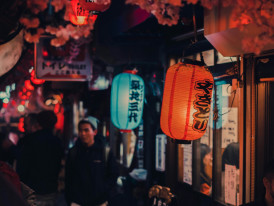
Street vendor with colorful lanterns Photo by Sophie Keen on Unsplash
Shopping Streets vs Shopping Arcades — What's the Vibe?
Osaka's shopping streets and covered shopping arcades offer very different experiences, and understanding the distinctions helps you choose where to spend your time.
Traditional Shopping Arcade Culture
Shotengai — traditional shopping arcades — are covered pedestrian streets lined with small shops and restaurants. These developed as local commercial centers and still serve neighborhood communities rather than tourists.
Family-run shops that have operated for decades, tiny restaurants specializing in single dishes, and a mix of practical services and quirky businesses that reflect the personalities of their owners. The atmosphere is distinctly local — these are places where neighbors shop and socialize.
Modern vs Traditional and Specific Arcades to Explore
Grand Front Osaka and similar modern developments near Osaka Station offer international brands and contemporary shopping experiences, but they lack the character of traditional shopping streets. For visitors, the traditional markets provide more insight into local culture.
Shinsekai's Jan Jan Yokocho offers a grittier, more working-class arcade experience. Hozenji Yokocho near Dotonbori provides a more refined traditional atmosphere. Each has its own character and clientele.
Street Vendor Culture and International Influences
Traditional shopping streets often feature outdoor vendors selling everything from fresh seafood to handmade crafts. These vendors add life and energy to the streets, creating a special atmosphere that modern malls can't replicate.
Osaka's shopping streets reflect the city's openness to outside influences. You'll find Korean, Chinese, and fusion restaurants integrated naturally into traditional Japanese commercial areas — a reflection of how the city has historically embraced trade and cultural exchange.
Tip
We match you with the right host, not just any guide.Want to experience the real Osaka with someone who lives there?
A fully private experience, planned and led by a local host who tailors the day to you
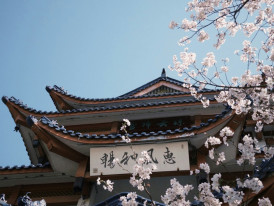
Cherry blossoms framing temple buildings Photo by Egxik Chahar on Unsplash
Cultural Sites and Ancient Temples
While Osaka itself is known more for commerce than spirituality, the region offers access to some of Japan's oldest temples and most significant cultural sites.
Shitennoji Temple and Buddhist Heritage
Shitennoji, founded in the 6th century by Prince Shotoku, is one of Japan's oldest Buddhist temples and provides insight into early Japanese culture. The current buildings are reconstructions, but the site itself has been continuously sacred for over 1,400 years.
The temple's layout follows classical Buddhist design principles and helps visitors understand how Buddhism was adapted to Japanese culture in its earliest phases. The tea ceremony demonstrations held here occasionally provide additional cultural context.
Cherry Blossoms at Temple Sites and Sacred Sites Beyond Tourism
During spring, temple grounds throughout the Osaka area become spectacular cherry blossom viewing spots. These locations offer a more contemplative cherry blossom season experience than the crowded parks.
Smaller temples and shrines throughout the city provide glimpses into contemporary Japanese culture — how ancient spiritual practices continue to function in modern urban settings. These sites often host local festivals and community events.
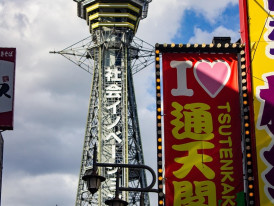
Tsutenkaku Tower rising above retro gaming parlors Image by Marco Catullo from Pixabay
Other Attractions Worth Considering
Beyond the major sites, Osaka offers numerous smaller attractions that provide insight into different aspects of the city's character.
Tsutenkaku Tower and Shinsekai
Tsutenkaku Tower in the Shinsekai district offers a retro experience that captures Osaka's working-class entertainment culture from the mid-20th century. It's not spectacular, but it's authentic in ways that newer attractions aren't.
Museum and Cultural Sites
The Museum of Oriental Ceramics houses world-class collections in a setting that allows for contemplative viewing. It's not for everyone, but if you appreciate fine crafts, it's exceptional. Don't feel obligated to visit every top attractions list. Osaka rewards visitors who follow their genuine interests rather than checking off predetermined boxes.
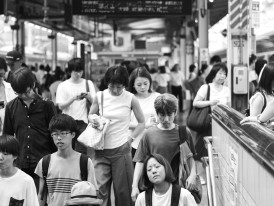
Rush hour commuters at Osaka Station. Photo by Alvaro Matzumura on Unsplash
Getting Around Like a Local
Understanding Osaka's transportation network makes the difference between a smooth visit and a frustrating one.
Train Stations and Route Planning
The Osaka Loop Line connects most major areas and is generally the most straightforward route for visitors. Namba Station serves as a central hub for southern Osaka, while Osaka Station anchors the north.
Smaller stations often provide access to more interesting neighborhoods. Kyobashi Station area offers excellent food and nightlife with fewer tourists. Sumiyoshi and other southern stations provide access to traditional residential areas.
Transportation Modes and First Trip Navigation Tips
Trains work best for longer distances and connections between major areas. Walking or cycling often makes more sense for exploring specific neighborhoods once you arrive. Buses are less useful for visitors unless you're heading to specific destinations not well-served by trains.
Download offline maps and transportation apps before you arrive. Station signs have English, but announcements are often Japanese-only. Platform numbering can be confusing — always check the destination on the train itself.
Ready to plan your perfect day in Osaka?
Start your experience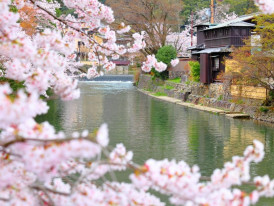
Cherry blossoms along a quiet canal.
Seasonal Considerations and Timing
Osaka's appeal varies significantly with the seasons, and timing your visit appropriately affects your entire experience.
Cherry Blossom Season Reality and Summer Challenges
Early April brings beautiful cherry blossoms but also massive crowds. Osaka Castle Park becomes particularly packed. For a more peaceful cherry blossom experience, consider smaller parks and temple grounds.
July and August can be brutal — hot, humid, and crowded. If you visit during summer, plan indoor activities during midday hours and focus on outdoor exploration early morning and evening.
Fall Colors and Winter Advantages
Autumn offers excellent weather and beautiful fall foliage, particularly in areas like Minoo Park. Many traditional festivals occur during fall months, providing cultural experiences that summer visitors miss. Winter offers fewer crowds, clearer air, and seasonal food specialties. While some outdoor attractions are less appealing, indoor venues like the Osaka Aquarium and covered shopping arcades provide comfortable exploration.
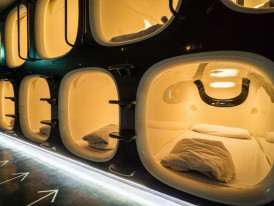
Modern capsule hotel interior
Where to Stay for Easy Access
Your accommodation location significantly affects how easily you can explore Osaka's different areas.
Capsule Hotels and Budget Options
Osaka offers numerous capsule hotels that provide affordable accommodation in central locations. Many are surprisingly comfortable and give you easy access to major attractions via the train network.
Neighborhood Character and Airport Access
Staying near Namba Station puts you in the heart of the entertainment district. The Osaka Station area offers better access to day trip destinations. Quiet neighborhoods like Sumiyoshi provide a more residential experience.
If you're flying in and out of Kansai International Airport, consider accommodation with direct train access. The airport express trains serve limited stations, so choosing the right location saves significant travel time.
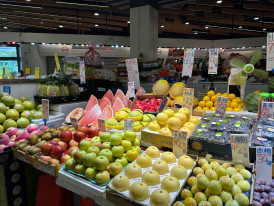
Colorful produce display at local market. Photo by demi kyu on Unsplash
Food Tour Alternatives to Organized Groups
Rather than joining organized food tour experiences, you can create your own culinary exploration that better matches your interests and pace.
Market Exploration and Sushi Rice Standards
Kuromon Ichiba Market and smaller neighborhood markets offer opportunities to sample local specialties without the constraints of group tours. You can move at your own pace and focus on foods that actually interest you.
Osaka's sushi traditions differ from Tokyo's; the sushi rice tends to be slightly more seasoned, reflecting the city's bold flavor preferences. Look for sushi counters where you can watch the preparation and ask questions.
Building Your Own Food Tour
Choose a neighborhood and explore systematically; try the takoyaki stand, visit the local bakery, sample regional specialties. This approach provides more authentic experiences than following predetermined tourist routes.
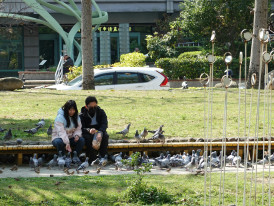
Local workers taking a break in a small park Photo by Arthur Tseng on Unsplash
Understanding Osaka's Special Atmosphere
What makes Osaka distinct from other major Japanese cities isn't any single attraction — it's the cumulative effect of the city's personality and culture.
Working-Class Roots and Local Life Integration
Osaka's merchant and working-class heritage creates a more direct, unpretentious atmosphere than you'll find in Tokyo or formal cultural centers. People are more likely to strike up conversations and share opinions.
Many visitors focus on tourist attractions, but Osaka's appeal lies in how easily you can experience ordinary local life — shopping at neighborhood markets, dining at family-run restaurants, walking through residential areas.
The Bustling City Reality
Yes, Osaka is a bustling city, but it's not uniformly hectic. Quiet residential streets exist minutes away from major tourist areas. Understanding this rhythm helps you experience the city's full character.

Tourist information center with helpful staff Photo by Mikhail Nilov on pexels
Planning Your Osaka Trip
How Many Days Makes Sense and Regional Exploration
Three to four days allows you to see major sites without rushing. A week provides time to explore neighborhoods and develop preferences. Many visitors try to pack too much into too little time and end up exhausted.
Osaka works well as a base for exploring the Osaka Prefecture and surrounding areas. Day trips to Nara, Mount Koya, or coastal areas provide variety while letting you return to familiar accommodation each night.
Budget Considerations
Osaka can be expensive or relatively affordable depending on your choices. Street food and neighborhood restaurants offer excellent value. Tourist-area restaurants and organized tours cost significantly more for often lesser experiences.
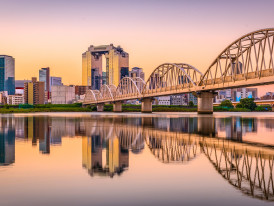
Sunset near Osaka Bay.
Final Thoughts: Osaka, Your Way
The best visit Osaka experiences happen when you treat this guide as a starting point rather than a rigid itinerary. Osaka rewards curiosity and spontaneity more than careful planning.
What I Hope You Take Away
This isn't about hitting every landmark or following someone else's idea of the perfect Osaka trip. It's about understanding what makes this city distinctive and finding the aspects that resonate with your own interests and travel style.
Osaka Experiences That Matter
The most memorable Osaka experiences usually happen in the spaces between planned activities — conversations with shop owners, discoveries in unmarked alleys, meals at places you stumbled upon rather than researched.
The World Beyond Tourist Lists
Reasons to visit Osaka vary. The city's real character emerges when you interact with it as a living place rather than a collection of attractions. That's what makes it worth visiting, and that's what makes it worth returning to.
Whether you spend your time at iconic landmarks like Osaka Castle or discovering hidden gems in quiet neighborhoods, the key is engaging with the city honestly rather than trying to experience someone else's version of it. Osaka has enough depth and variety to support whatever kind of travel experience you're seeking, you just need to be clear about what that is.
Ready to explore Osaka beyond the typical tourist trail? Check out our comprehensive guide to unique Osaka experiences for even more local insights and off-the-beaten-path adventures.
What if your day in Osaka was planned by someone who knows it — and you?
City Unscripted matches you with a local host who creates a private experience based on your interests, not a set route.
Want to experience the real Osaka with someone who lives there?
A fully private experience, planned and led by a local host who tailors the day to you
